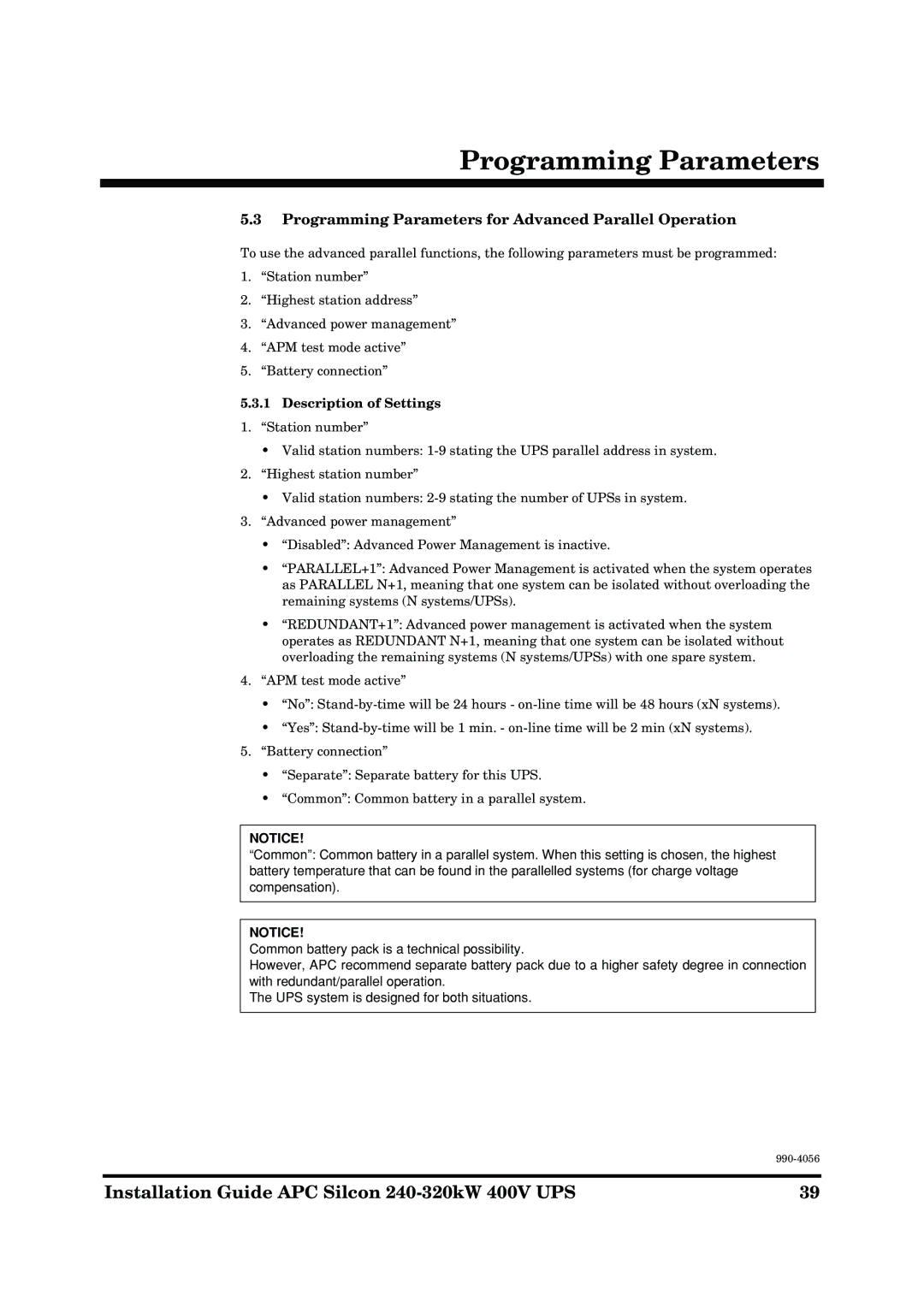
Programming Parameters
5.3Programming Parameters for Advanced Parallel Operation
To use the advanced parallel functions, the following parameters must be programmed:
1.“Station number”
2.“Highest station address”
3.“Advanced power management”
4.“APM test mode active”
5.“Battery connection”
5.3.1 Description of Settings
1.“Station number”
•Valid station numbers:
2.“Highest station number”
•Valid station numbers:
3.“Advanced power management”
•“Disabled”: Advanced Power Management is inactive.
•“PARALLEL+1”: Advanced Power Management is activated when the system operates as PARALLEL N+1, meaning that one system can be isolated without overloading the remaining systems (N systems/UPSs).
•“REDUNDANT+1”: Advanced power management is activated when the system operates as REDUNDANT N+1, meaning that one system can be isolated without overloading the remaining systems (N systems/UPSs) with one spare system.
4.“APM test mode active”
•“No”:
•“Yes”:
5.“Battery connection”
•“Separate”: Separate battery for this UPS.
•“Common”: Common battery in a parallel system.
NOTICE!
“Common”: Common battery in a parallel system. When this setting is chosen, the highest battery temperature that can be found in the parallelled systems (for charge voltage compensation).
NOTICE!
Common battery pack is a technical possibility.
However, APC recommend separate battery pack due to a higher safety degree in connection with redundant/parallel operation.
The UPS system is designed for both situations.
Installation Guide APC Silcon | 39 |
